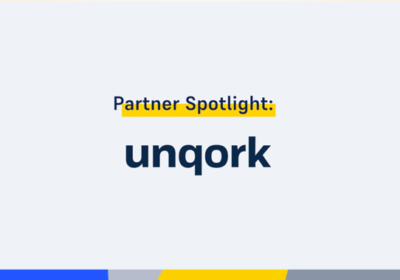Leveraging Data to Make Better Underwriting Decisions webinar write-up
Last November in partnership with Insurance Insider we ran a webinar that looked at some of the challenges insurers face when presented with large amounts of data, as well as how to overcome the problem of value leakage to make the most of the resources available.
In this blog, authored by the team at Insurance Insider, we cover the key conversation points discussed during the webinar.
The insurance industry has always relied on data. Whether for underwriting, claims management or any other aspect of the insurance life cycle, data has always been key.
The problem is that today’s society creates an almost unmanageable level of data that, unless you have the right approach, can lead to large amounts of value leakage that hinders rather than helps a business.
Speaking on the webinar, Dr Lewis Liu, co-founder and CEO of Eigen Technologies, said that the real problem for insurers came in the form of unstructured data.
“When we think about data, I think most people think about large Excel spreadsheets and databases, but in reality, that only accounts for about 10 to 20% of the data in the world,” he said. “That's structured data – data that you can use to make decisions, generate insights, or automate processes. The reality is that 80 to 90% of data in this world is not usable, e.g. it is unstructured.”
And when it comes to the life cycle of a P&C insurance policy, it is that unstructured data that is most valuable to insurers, usually received in the form of documents or valuation reports.
“All of these documents contain extremely important pieces of data that feed into an underwriting model, but that data is manually collected, it is inaccurate, and it's incomplete,” Dr Liu said. “That is because you frankly don't have the time and bandwidth to collect all that data, so you're probably not generating the right type of risk or premium that you could be.”
And Anthemis Group managing director Kate Sampson said the issue was exacerbated by all the legacy data that insurers hold on their systems, but if you could make use of the information contained within those data sources, there are some real competitive advantages to be found.
“There's all this unstructured data that exists in in all these old policies, old submissions, old claims data, and you also have new data coming in that you want to leverage for efficiencies in the process,” she said. “So it's quite an overwhelming problem when you start to think of how much efficiency and insights and improvements in, not only the underwriting process and the policy life cycle, but also in the customer experience and the claims experience that could be garnered if you could harness this data and use it more effectively.
“So it's a very consistent theme from insurer to insurer, and is something that needs to be a priority and fixed.”
Using Data to Add Value
Technology, however, can play a role in processing this unstructured data in order to glean additional information quickly and more accurately.
George Beattie, head of incubation underwriting at Beazley, said that automating processes such as these were key for the future success of the industry.
“We know that data exists in a particular format, but we need to get that into our model,” he said. “And stripping out those manual processes that don't have to exist, and minimizing the risk of that process is, in my view, a near term imperative, so that we can get to doing more stuff that is of value.
“And then can we actually use data capabilities to provide value adds within our products and to the buyers of our products, where they have a requirement to use data analysis or data to understand their risk positioning better, and therefore become better risks by engaging in that kind of service.”
The Three Levers of Success
Ultimately, Dr Liu says the benefits of using technology to automate processes and extract additional value from unstructured data can be distilled down to three key value levers: cost, revenue and risk.
The first lever, Dr Liu said, is obvious. It is all about reducing operating expenses by using automation – or hyper-automation – to eliminate re-keying and drastically reduce the claims cycle.
The second lever, meanwhile, is more about making the most of what you already have to drive up revenue, and Dr Liu cited the example of work Eigen Technologies is doing with several reinsurance and ILS providers a just one example of how technology can help.
“Our technology gives them the ability to actually take on, reinsure and structure more risks, but without the need to hire more people,” he said. “So that is not a cost saving thing, it's about the ability to actually grow without needing to actually hire – and it is in the hyper-automation world where you are actually able to that.
“We work with several carriers where we automatically ingest submission emails, and I think in those spaces, they can actually get their quote back to the broker 90% faster than all their competitors, and that means suddenly you're winning deals faster.”
The third and final lever is all about better understanding and better managing risks, something that is vital across the whole of the insurance industry.
“Our technology allows us to extract really detailed information on the fixed income portfolio side versus the policy side, to understand the cash flow risks and cash flow situations of both, and then be able to actually reduce a tremendous amount of regulatory capital held against those risks,” Dr Liu said. “And actually, by the way, this helps to drive up revenue too, because you could then write more business.”
Find out more about the solutions that Eigen provides to the insurance industry here or watch the webinar on-demand in full here.

-
World Economic forum 2020
-
Gartner Cool Vendor 2020
-
AI 100 2021
-
Lazard T100
-
FT Intelligent Business 2019
-
FT Intelligent Business 2020
-
CogX Awards 2019
-
CogX Awards 2021
-
Ai BreakThrough Award 2022
-
CogX Awards Best AI Product in Insurance
-
FStech 2023 awards shortlisted
-
ISO27001
-
ISO22301
-
ISO27701
-
ISO27017
-
ISO27018


















